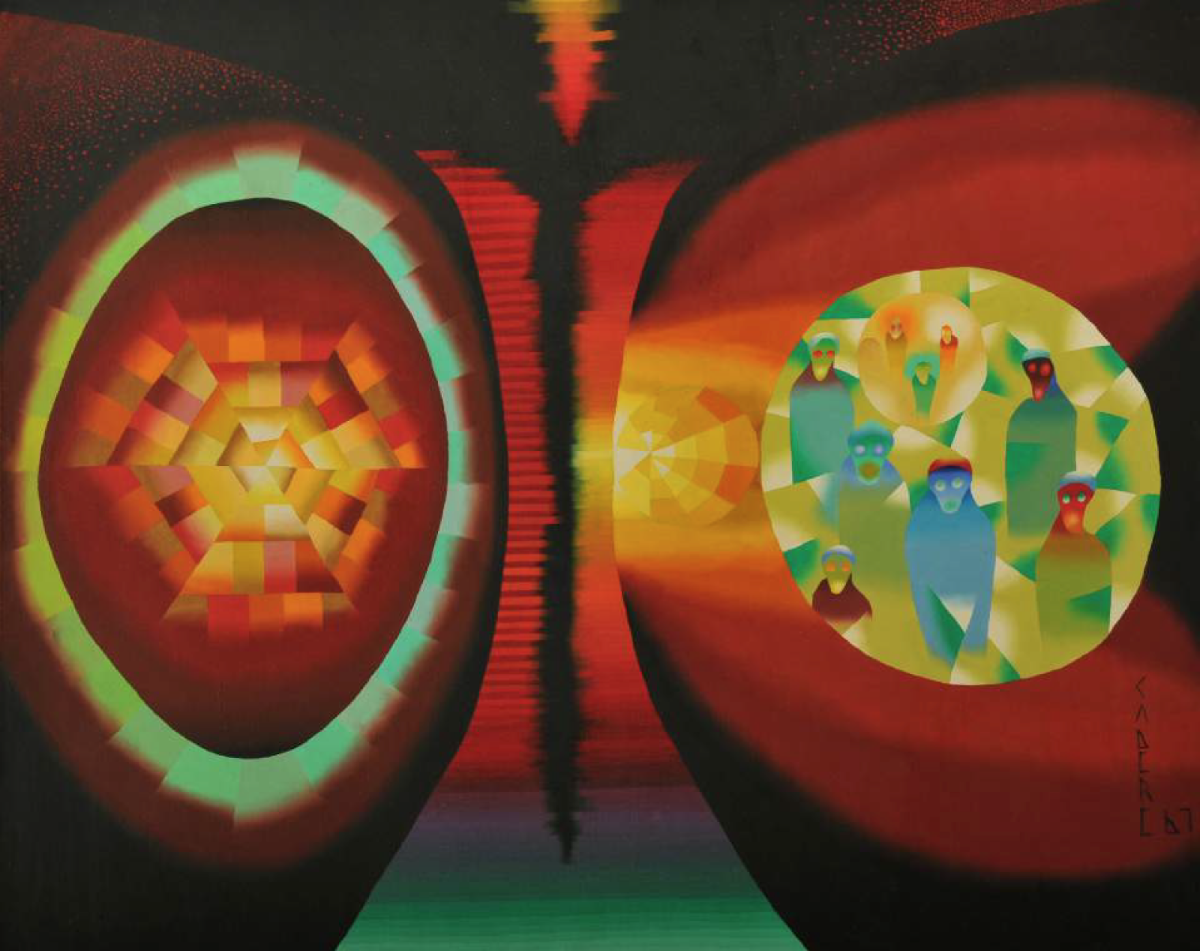
André Cadere (Romania), Untitled, 1967.
Together with ever-exciting and stimulating artworks, the “who’s who” of the art world were on view at the VIP preview of the most cherished and revered of New York art fairs, Independent. Art-world supernovas wandered the dazzling array of top-notch galleries, including Maurizio Cattelan, Art Basel Global Director Marc Spiegler, and a very lively and engaging Jerry Saltz, the superstar art critic who delighted visibly-excited viewers with impromptu art classes inspired by his preferred artworks. In its eleventh edition, Independent featured 60 leading galleries and institutions.
A visit to Independent always resembles a tour of an impeccably curated top-tier museum exhibitions. There is no Miami Beach Art Basel party vibe here. It never feels claustrophobic, even at full occupancy. It’s the most rewarding art fair for art lovers and cognizant buyers. Each gallery enjoys wide encasing walls that never suffocate the works. Despite the wide range of style, media, and subject matter, each gallery’s narrative magically flows into the next seamlessly, creating a uniform experience as though multiple episodes of the same dream. Independent’s choice of galleries and artists always feels fresh, innovative, thought-provoking, and challenging. The viewer’s attention is always stimulated, pricked, tested; at Independent, boredom is not an option.
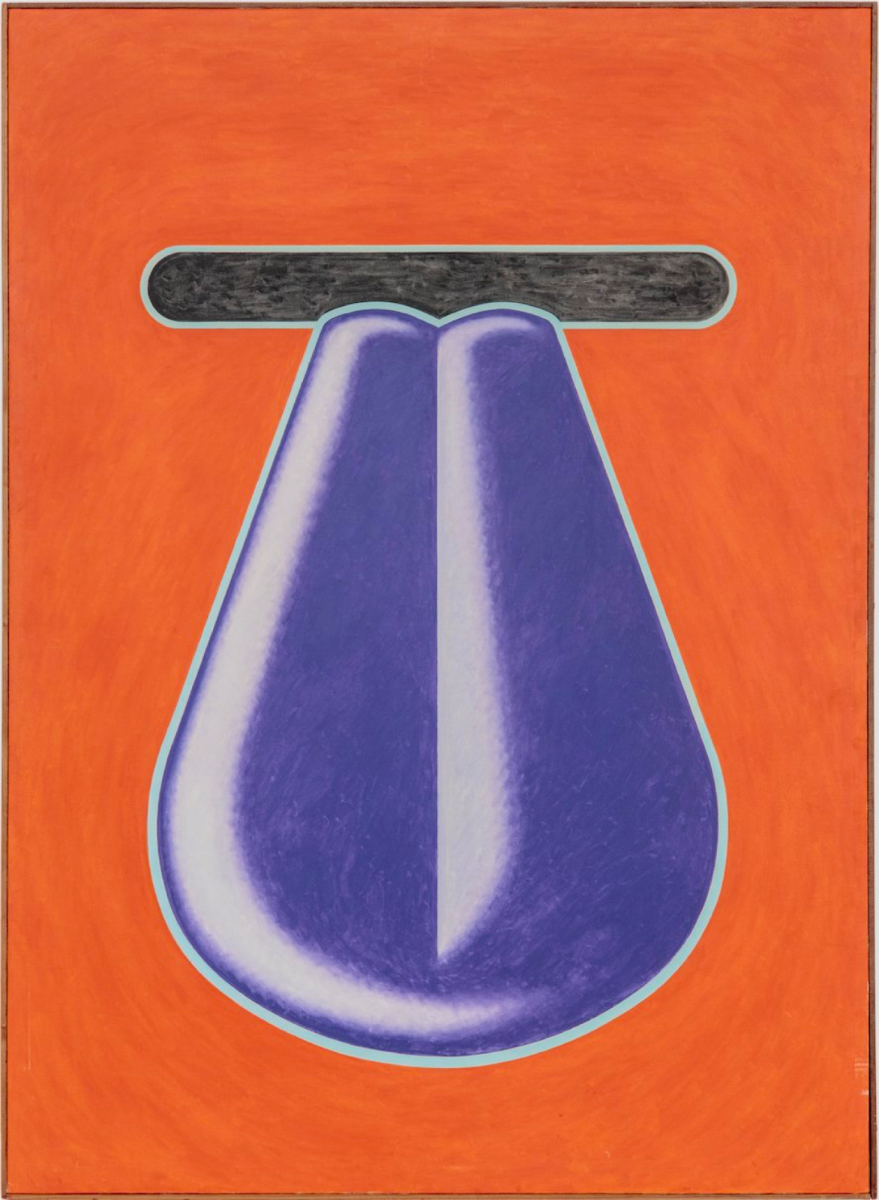
Leslie Kerr (United States), Raspberry, 1964.
Oil on canvas. 68 x 50 in (172.7 x 127 cm).
The Landing, Los Angeles, presents paintings from the 1960s by Californian artist Les Kerr. Kerr was deeply embedded in the beat generation of the 1950s. Many of Kerr’s works disappeared when he moved from California to New York towards the end of his lifetime; the Landing is proud to be presenting five of his remaining works.
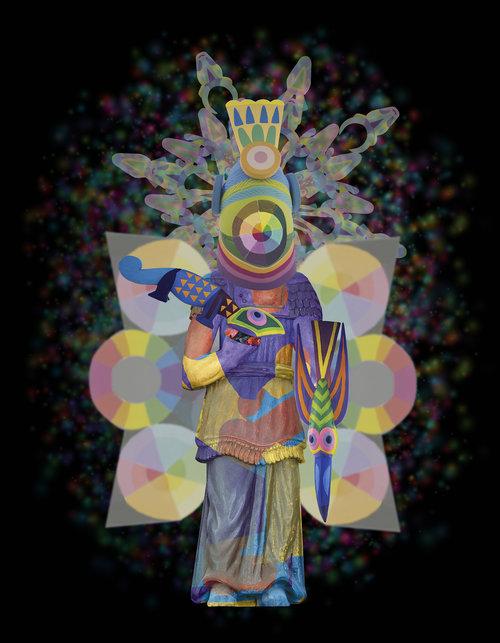
Saya Woolfalk (b. Japan, based in New York), The Four Virtues (Temperance), 2017/2019.
Archival inkjet pigment print on paper, edition of 10. 44 x 34 in.
Leslie Tonkonow Artworks + Projects presents Saya Woolfalk’s newest multimedia installation in a dedicated space on the 5th Floor Mezzanine at Independent 2020. Future Relics From a Landscape of Anticipation includes prints, drawings, sculptures, and video sculptures. Inspired by her familial history, Woolfalk combines elements of African American, Japanese, and European cultures, with allusions to anthropology, feminist theory, science fiction, Eastern religion, and fashion, depicting the story of a chimeric species she names the Empathics, botanic humanoid beings with a highly evolved ability to understand the experiences of others.
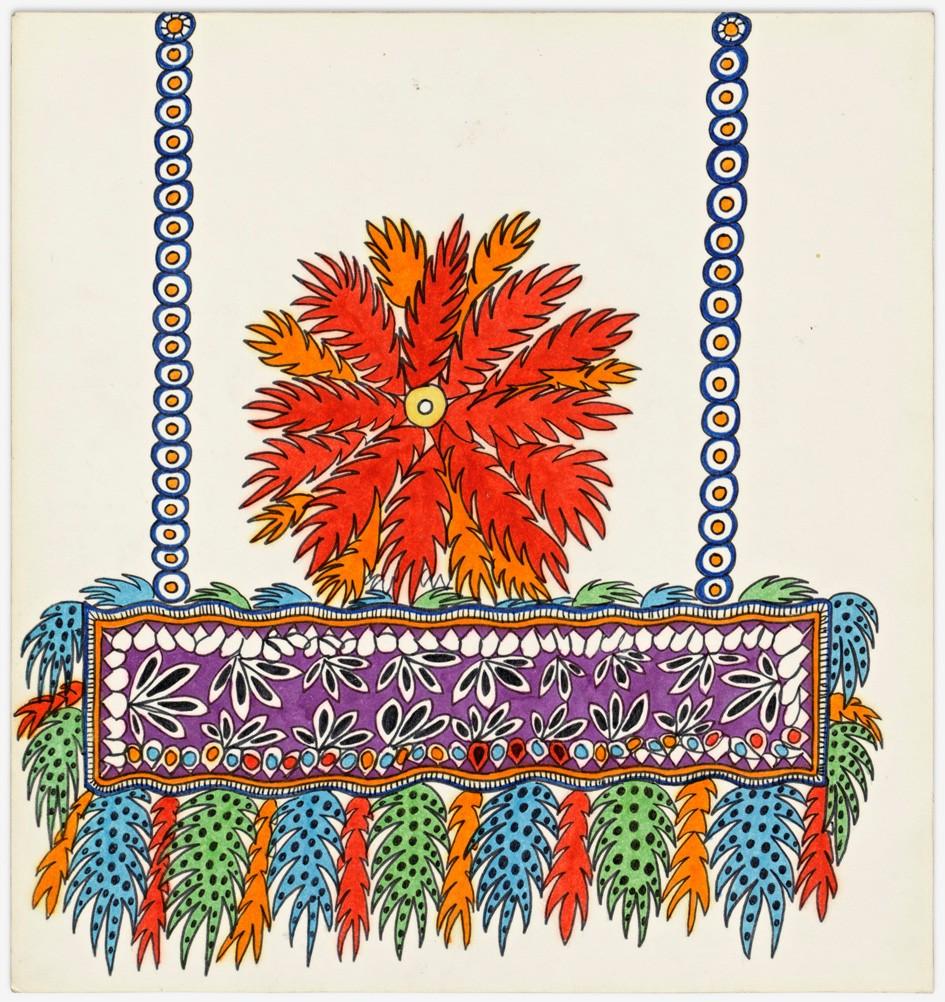
Dorothy Iannone (United States), Swing, from the Chair Drawings series, 1976.
Felt pen on Bristol board, laminated. 36.5 x 34.5 cm.
Air de Paris presents Dorothy Iannone’s solo exhibition. A self-taught painter, Iannone’s prolific career spans over six decades and focuses on eroticism and the human sexual experience. Since the beginning of her career in the 1960s, Dorothy Iannone has made vibrant paintings, drawings, prints, films, objects, and books, all with a markedly narrative and overtly autobiographical visual feel.
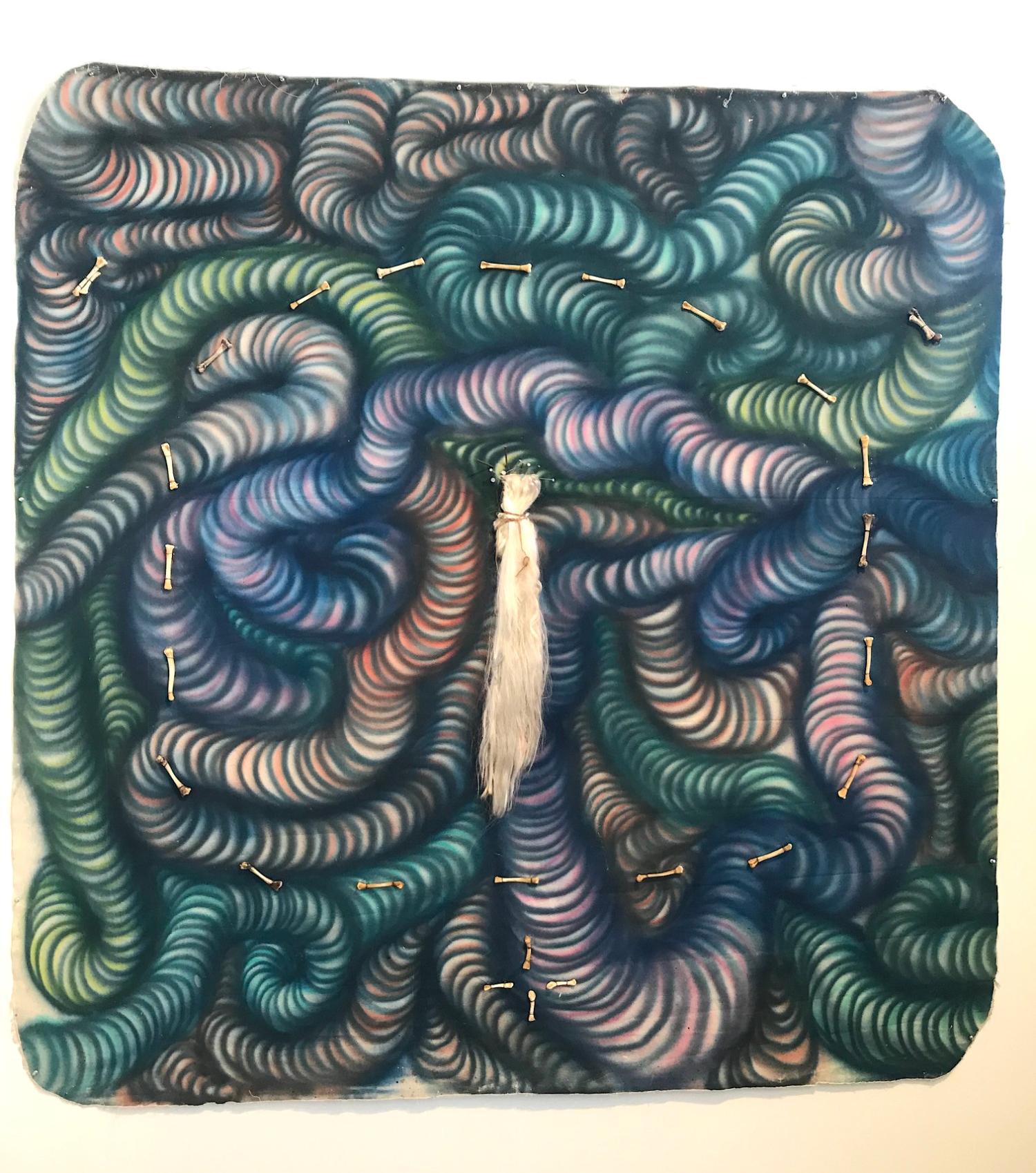
Carlos Villa (United States), Ritual, 1970.
Wig, chicken bones, canvas. 101 x 95 in (256.54 x 241.3 cm).
Born in 1936 in San Francisco, Carlos Villa created works that prompted a dialogue between the history of Filipino art and western art history. This contributed greatly to the zeitgeist of artistic multiculturalism in the Bay Area in the 1970s. Villa configured multi-media projects and performances that he called “Actions,” which were often group collaborations touching on the idea of multicultural subjectivity. He liberally experimented with material, overcoming artificial contradictions between minimalist tendencies and abstract expressionist gestures.
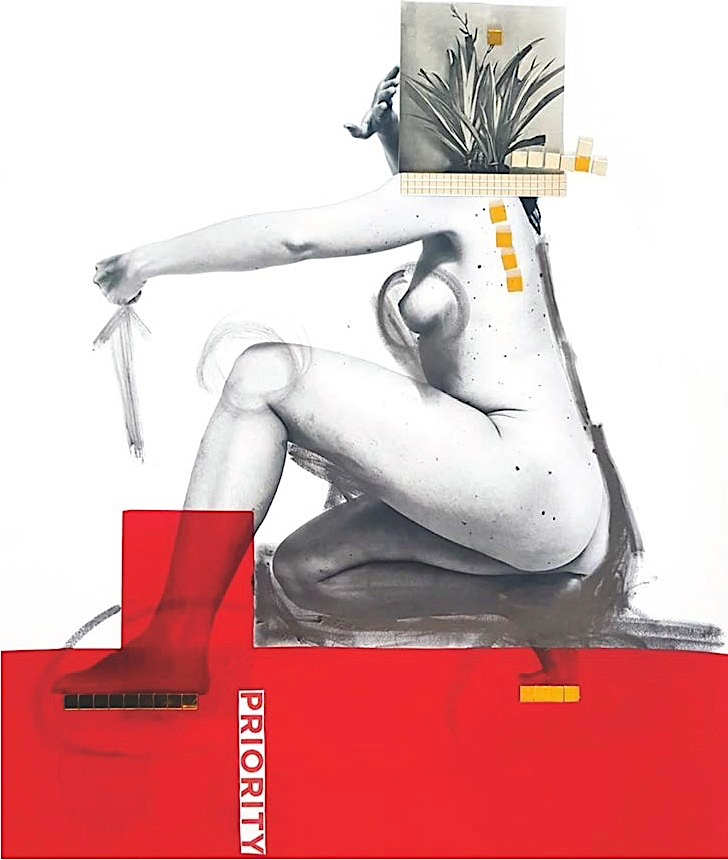
Marinella Senatore (Italy), Can one lead a good life in a bad life?, 2019.
Mixed media: fine art print on Epson Hot Press paper with applied mosaic mirror tiles, rope, moldable graphite, archival images, and glass outliner. 70 x 50 cm.
Marinella Senatore is a multi-disciplinary artist trained in music, fine arts, and film. With a practice characterized by a strong collective and participatory dimension, her work merges forms of resistance and local vernacular with popular culture, dance, music, mass events, and activism. Through various assemblages, Senatore rethinks the political nature of collective formations and presents an opportunity for the public to generate social change. Intertwining with the artist’s personal autobiographical experiences and collectively shared narratives, her practice encompasses collage, performance, sculpture, photography, and video.
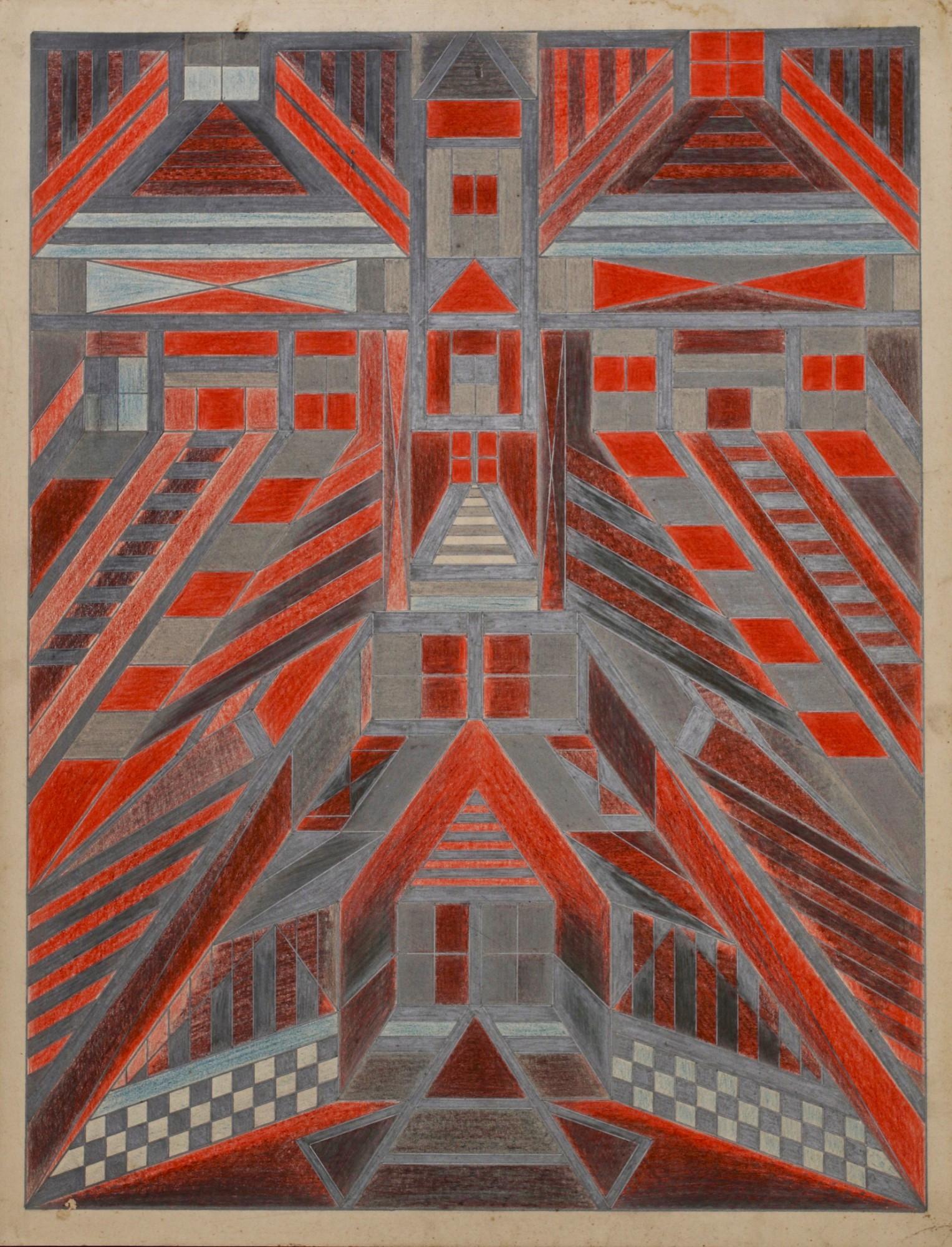
Domingo Guccione (Argentina), Untitled, c. 1930-55.
Colored pencil and graphite on paper. 25.5 x 19.6 in.
Ricco/Maresca, New York, presents the world debut of outsider artist Domingo Guccione who produced work from the 1930s to the mid-1950s. Though Guccione was colorblind and self-taught, his work explores a range of geometric colors and forms. He was a mystic and a musician with no training in the visual arts and very little knowledge of art history. The artist worked in private and claimed to channel a mysterious force that took hold of him in bouts of creative energy.
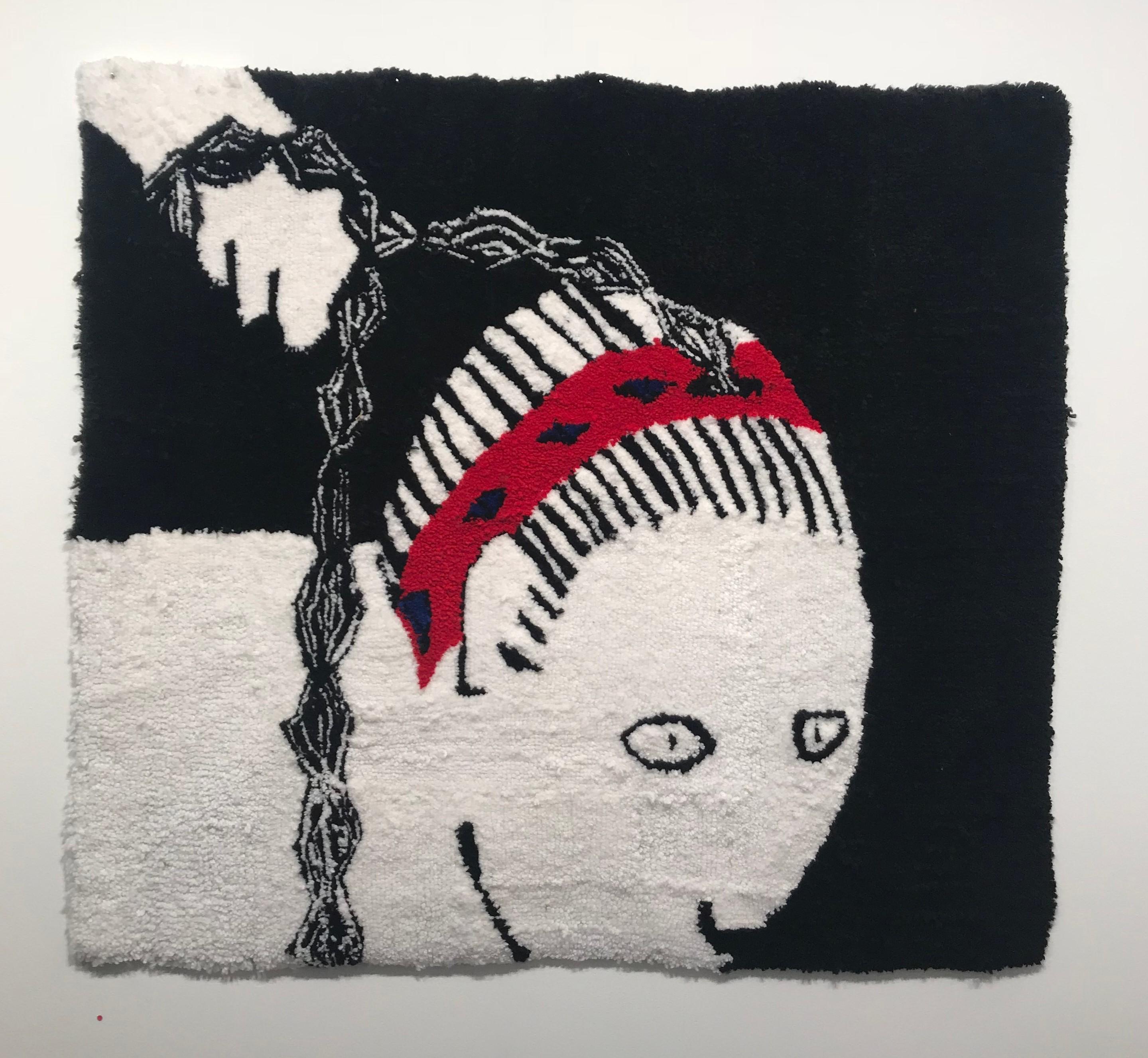
Kim Westfall (b. South Korea, based United States), Freak on a Leash, 2016.
Tufted acrylic yarn textile. 48 x 48 in.
Westfall’s subjects are rooted in the artist’s personal experience and explore the persistent historical and ethical conflicts that relate to her own hybrid identity, as well as the still unresolved legacies surrounding the adoption of Korean children by American families in the decades following the Korean War. Westfall’s tapestries are made with a simple machine tufting technique: a laborious yet ad-hoc craft process where evidence of the maker’s hand is ever-present.
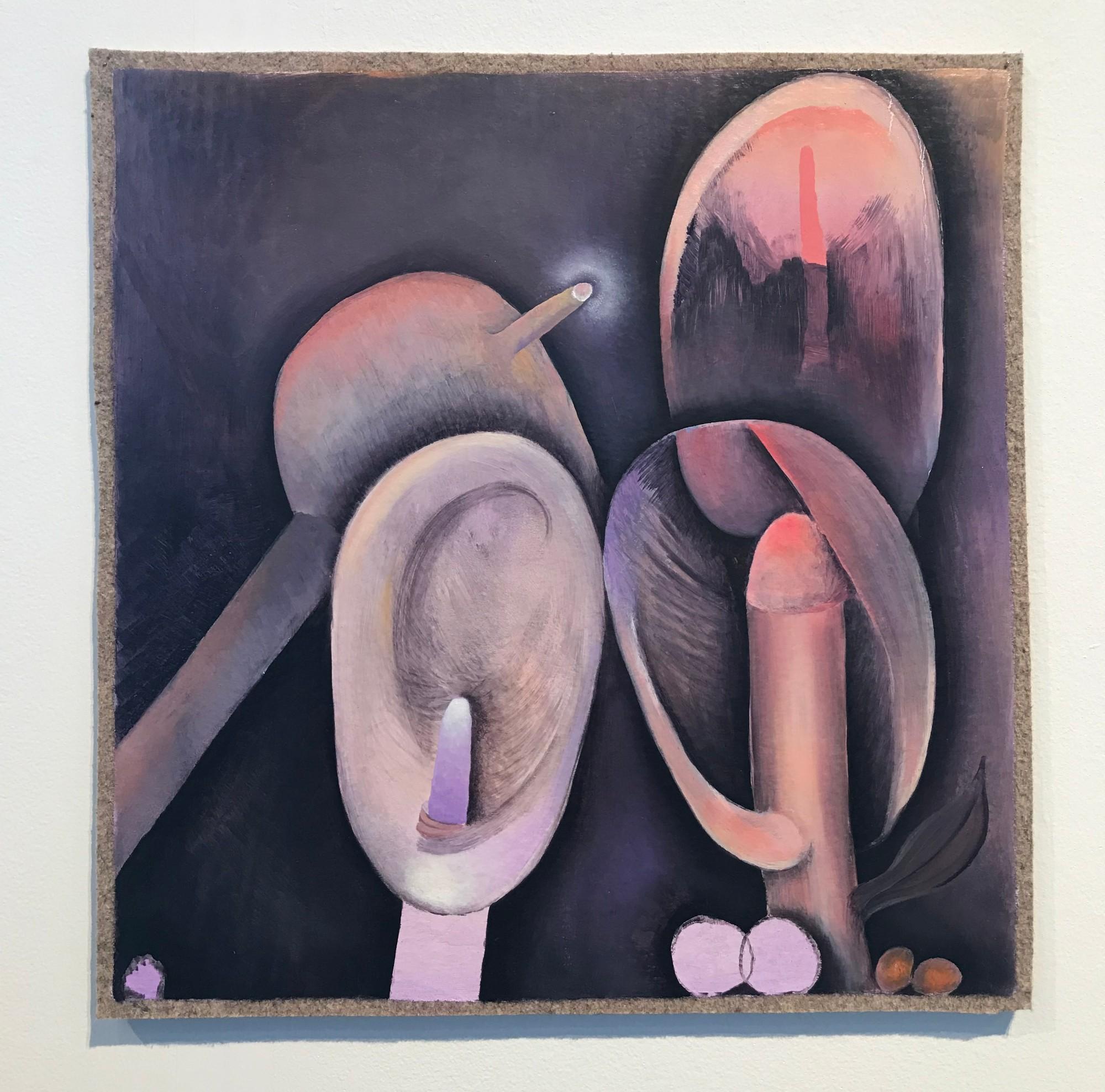
Santiago de Paoli (Argentina), First meeting, 2020.
Oil on felt fabric. 51 x 49 cm.
Santiago de Paoli paints moons, candles, lamps, human posteriors, genitalia, flowers, hearts, socks (socks?, yes socks), landscapes, and other relatively banal subject matter. In order to obviate the seriousness of the medium, de Paoli paints on singularly unusual supports which include felt, recycled textiles, as well as wood (often also recycled), and more recently, plaster. His iconographic frame of reference includes everything from Italian renaissance painting to the surrealism of Giorgio de Chirico to the thematic simplicity and obsessiveness of Giorgio Morandi as well as the antic weirdness of Philip Guston.
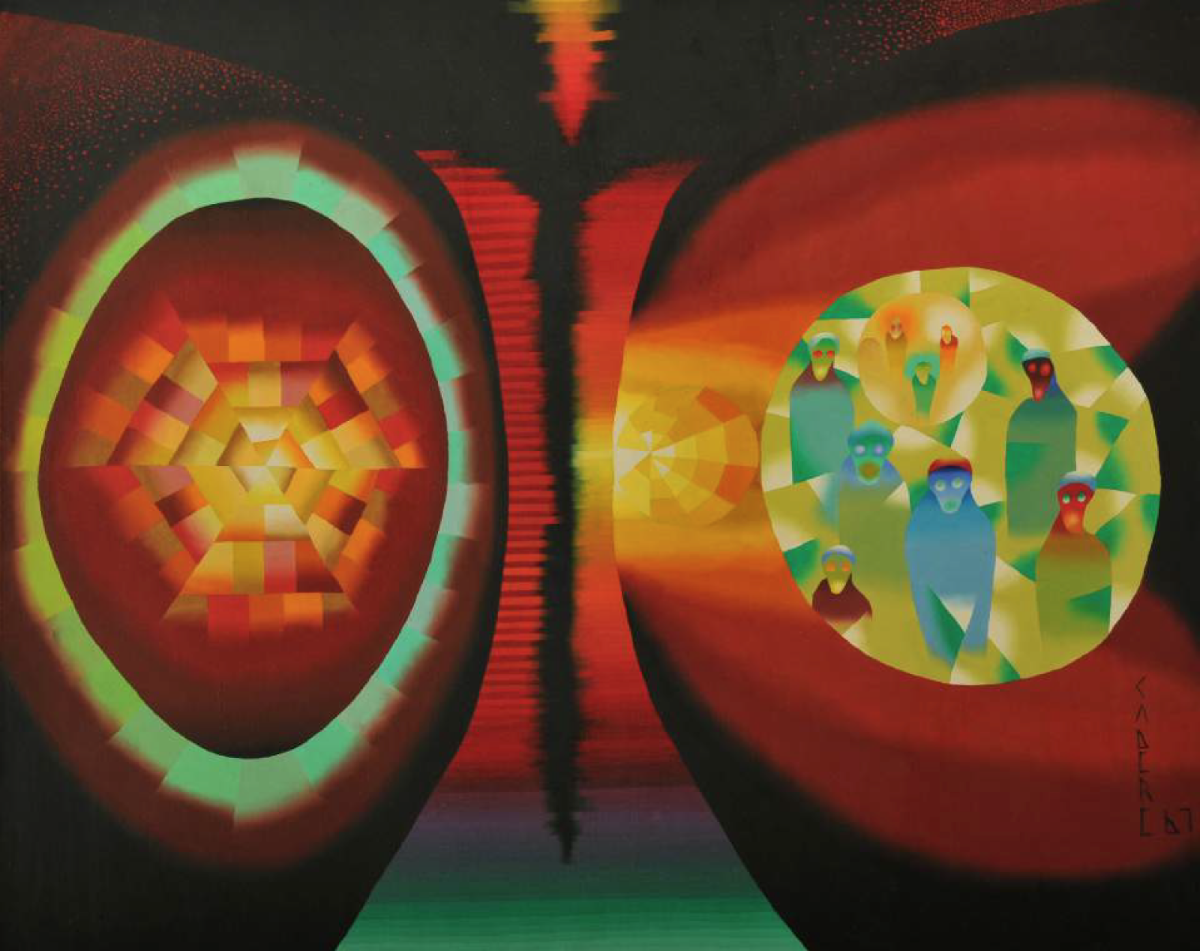
André Cadere, (Romania), Untitled, 1967.
Oil on canvas. 25.59 x 31.88 in (65 x 81 cm).
Galerie Hervé Bize, Nancy, presents two rare paintings by conceptual artist André Cadere from 1967, concurrently on view at MoMA. These paintings demonstrate Cadere’s Op-Art sensibility and growing interest in color theory. Cadere strove to remove art from the restrictive structure of museums and galleries. He is best known for his Barres de Bois Rond (Round Wooden Bars) that he would carry on his shoulders to outdoor public spaces and exhibition openings in the 1970s to question art’s relative relationship to its physical and institutional environment.
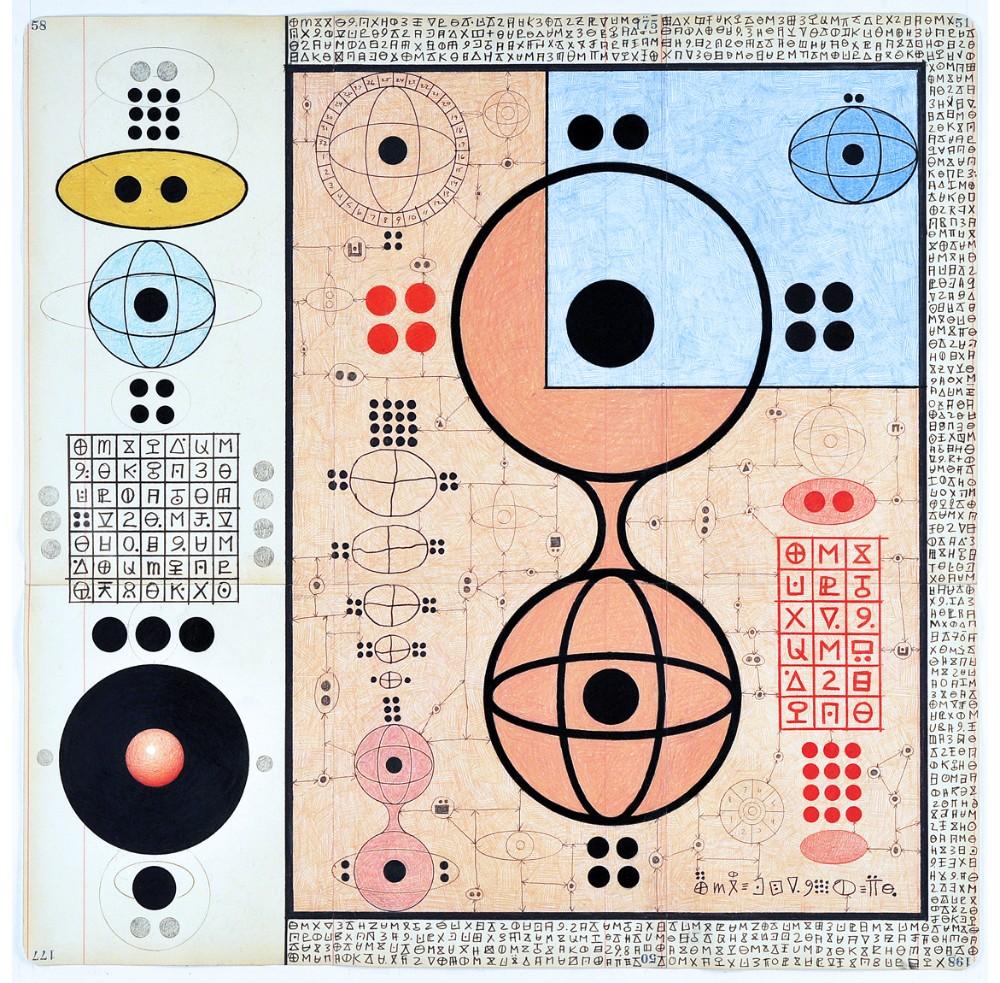
Karla Knight (United States), Spaceship 11, 2017-19.
Colored pencil and graphite on paper. 30 x 30 in.
Karla Knight's work consists of imaginary language, objects, diagrams, and symbols. It forms a pictorial language of symbol and writing whose underlying system is not known. Simultaneously ancient and futuristic, the work creates an alternative culture that plays with the mystery of life, and what lies hidden underneath. The artist grew up in a household where the existence of supernatural forces was readily accepted: her father was an author of books on the occult, UFOs, and ESP.
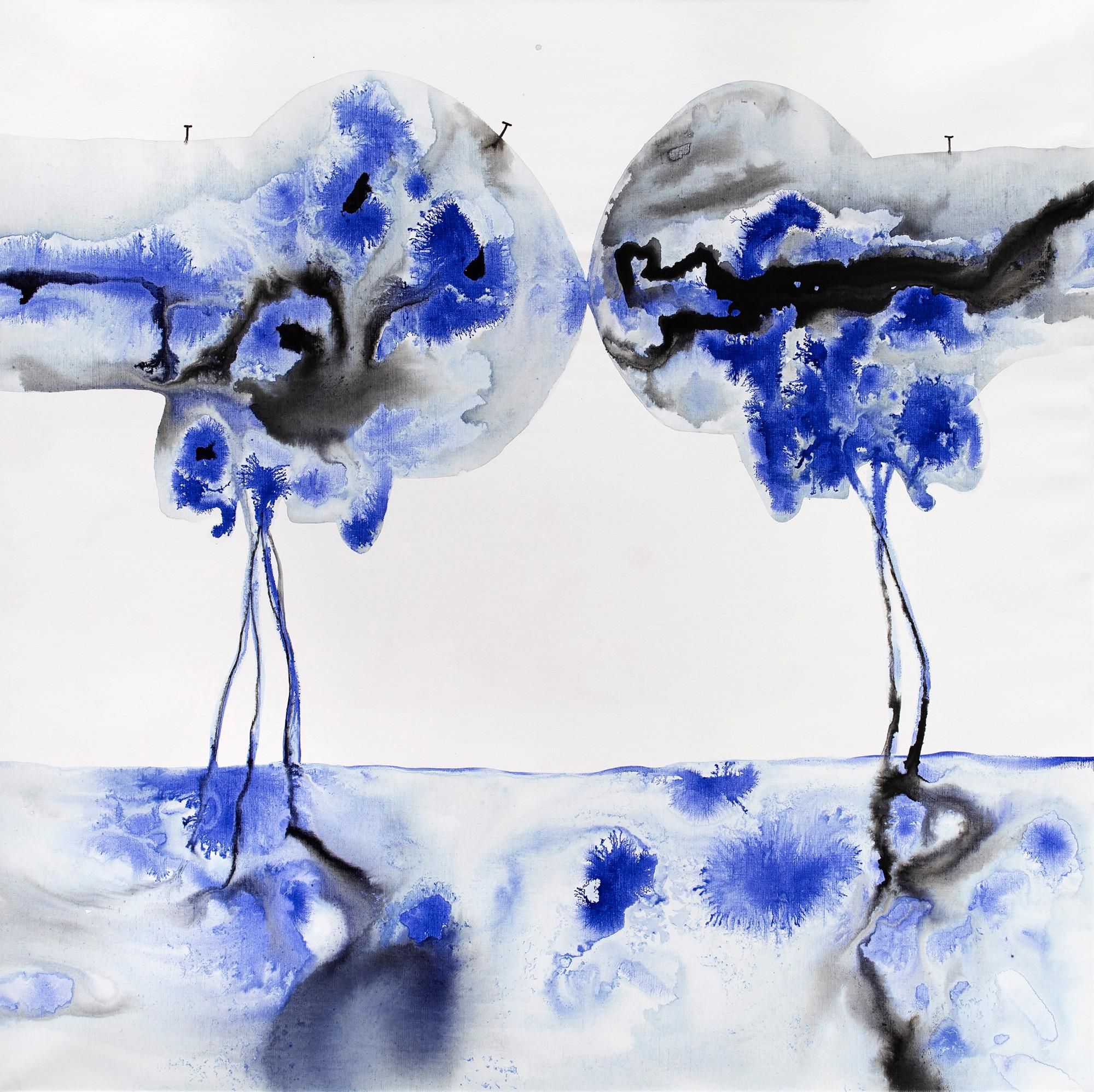
Barthélémy Toguo (Cameroon), Eating Juicy, 2018.
Ink and wash on canvas. 78.75 x 78.75 in (200 x 200 cm).
Galerie Lelong & Co., New York, presents a solo booth of recent work by Barthélémy Toguo. The artist’s dreamlike paintings depict human, animal, and plant forms in ink and wash; the artist skillfully applies layers of liquid pigment allowing the abstract renderings to merge and morph into each other. Toguo dissolves the boundaries between man and nature, initiating a conversation about our relationship to the environment and binding issues of ecology to society.
























